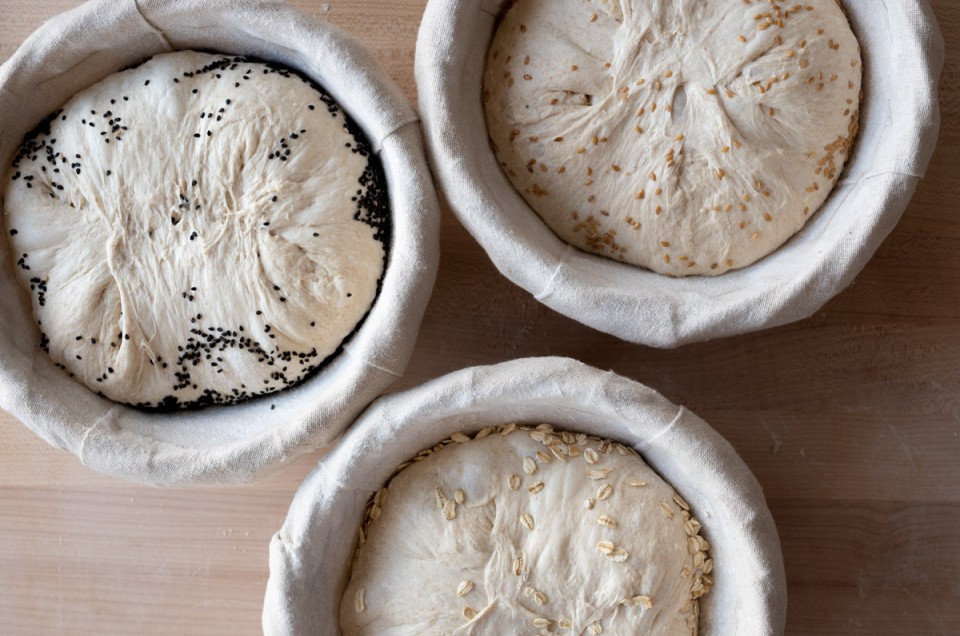


Topping bread dough with seeds and grains is a simple and effective way to increase the nutrition, flavor, and texture in a baked loaf of bread. Most of us have experimented with mixing seeds, nuts, dried fruit, and even other grains into bread dough. However, adding the ingredients to the exterior is a surefire way to develop even more crunch, plus the depth of flavor that comes only as the toppings are toasted fresh. And these toppings can pack loads of flavor.
Applying the toppings in a single, even layer on the outside of your shaped dough can be tricky. After all, the last thing we want is to mangle the dough we just spent the good part of a day coaxing into a beautiful shape. In this post we'll take a look at a few approaches to easily coating a shaped boule (round) and batard (oblong). These methods will not only keep your workspace clean but will also help you keep your dough structure intact.
Let's first take a look at a few seeds and grains we can use to bring additional flavor to your bread.
There are many ingredients we can use for topping bread dough, but there's one thing you need to keep in mind. Whatever topping you choose, it will be toasted in the oven as your dough is baked. Therefore, there's no need to toast seeds or grains before using them; they'll be just right by the time your bread is fully baked. If you toast them ahead of time they might be overly done, or even burned, by the end of baking.
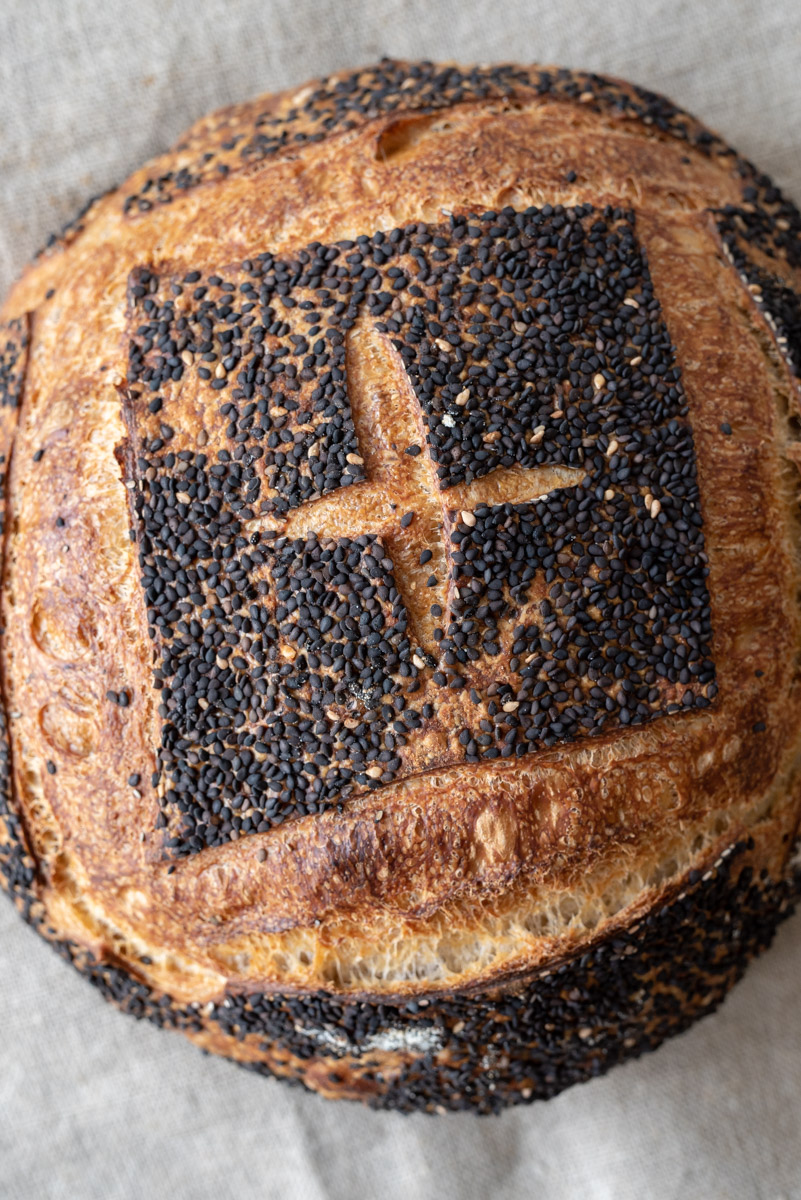
When used as a topping, the rich, nutty flavor of black sesame seeds is amplified during baking, adding complexity in an unexpected and delicious way. There's also striking visual contrast between the exposed brown crust and jet-black seeds.
In addition to black sesame, one of my favorites is the humble rolled oat. When you bake bread topped with oats, they're toasted a dark brown and become a crunchy minefield on the crust. This added texture, coupled with their nutty flavor, would be absent had the oats been mixed into the dough directly, where they'd become soft and almost imperceptible.
Whole flaxseed is another winner. While it can have a strong flavor for some, especially when toasted on the exterior, I find it complements a mostly white loaf of bread quite well. Not only is the taste welcome, but flaxseed contains significant amounts of essential fatty acids, antioxidants, and fiber.
If you're looking for a more rustic appearance with a crunchy texture, raw wheat bran is a great choice. I love using it on the exterior of a batard, as it contrasts nicely with the delicate appearance of a single score spanning the length of the oblong loaf. Similar to flaxseed, wheat bran is rich in dietary fiber and essential fatty acids, and also in dietary minerals and other vitamins.
Now, let's take a look at the first, most approachable way to top our bread dough.
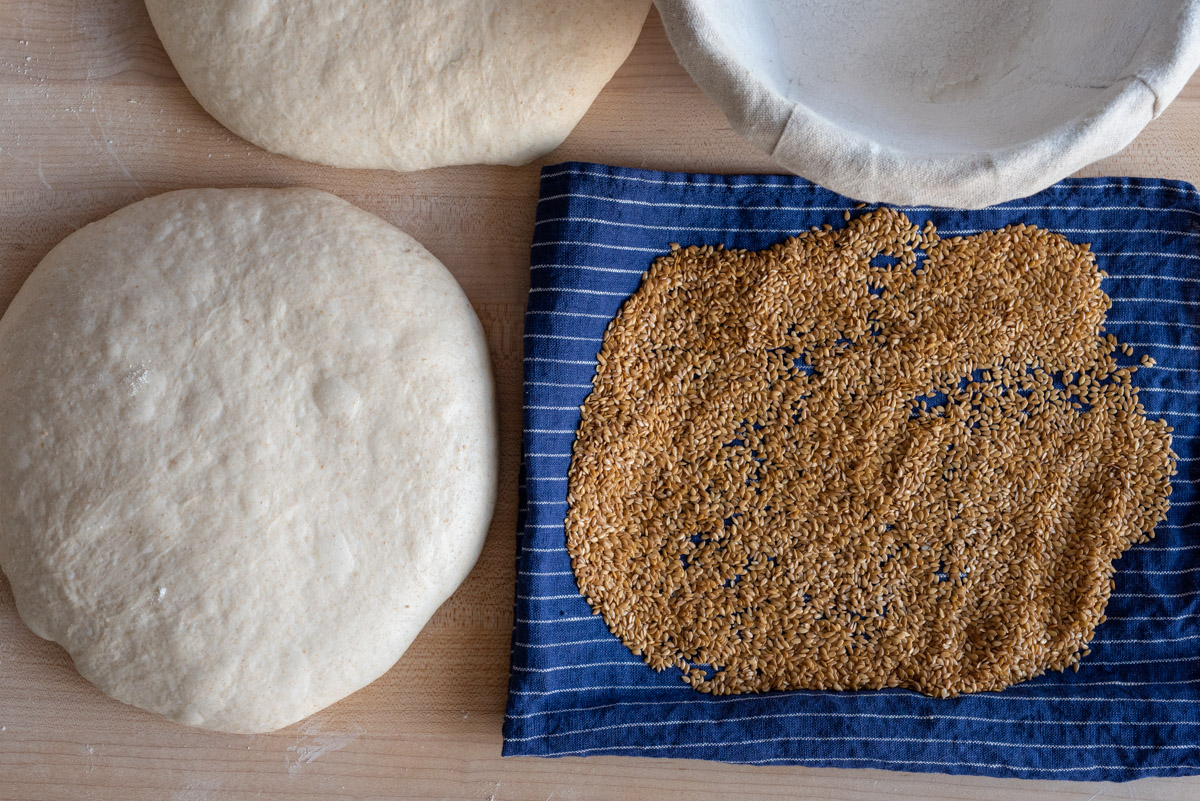
A straightforward, and my most used, method to top the outside of a loaf is to spread the ingredients on a towel in a thin layer. After you shape your dough, invert it onto the toppings so the good side (the smooth side opposite the seam) is facing down and the seam is facing up.
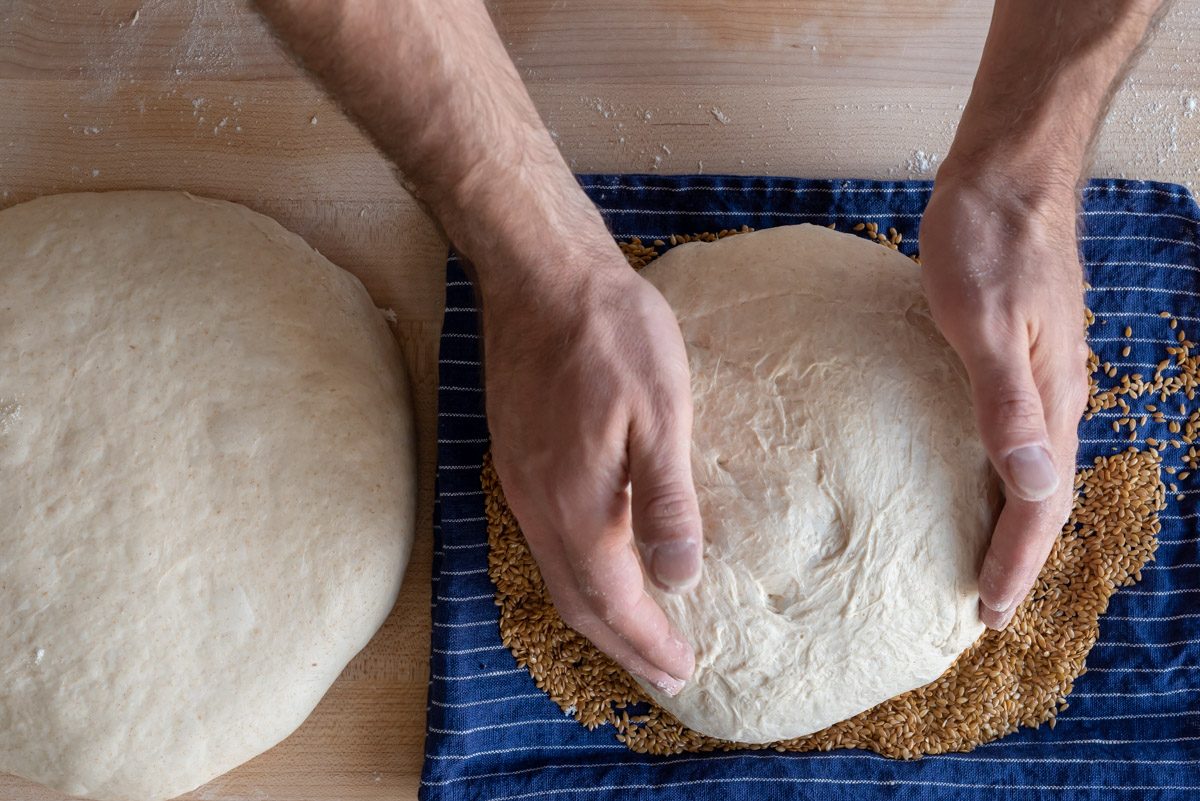 As shown above, use your hands to rock the dough around to ensure the sides are well covered. When sufficiently coated, gently scoop up and transfer the dough to the final proofing basket.
As shown above, use your hands to rock the dough around to ensure the sides are well covered. When sufficiently coated, gently scoop up and transfer the dough to the final proofing basket.
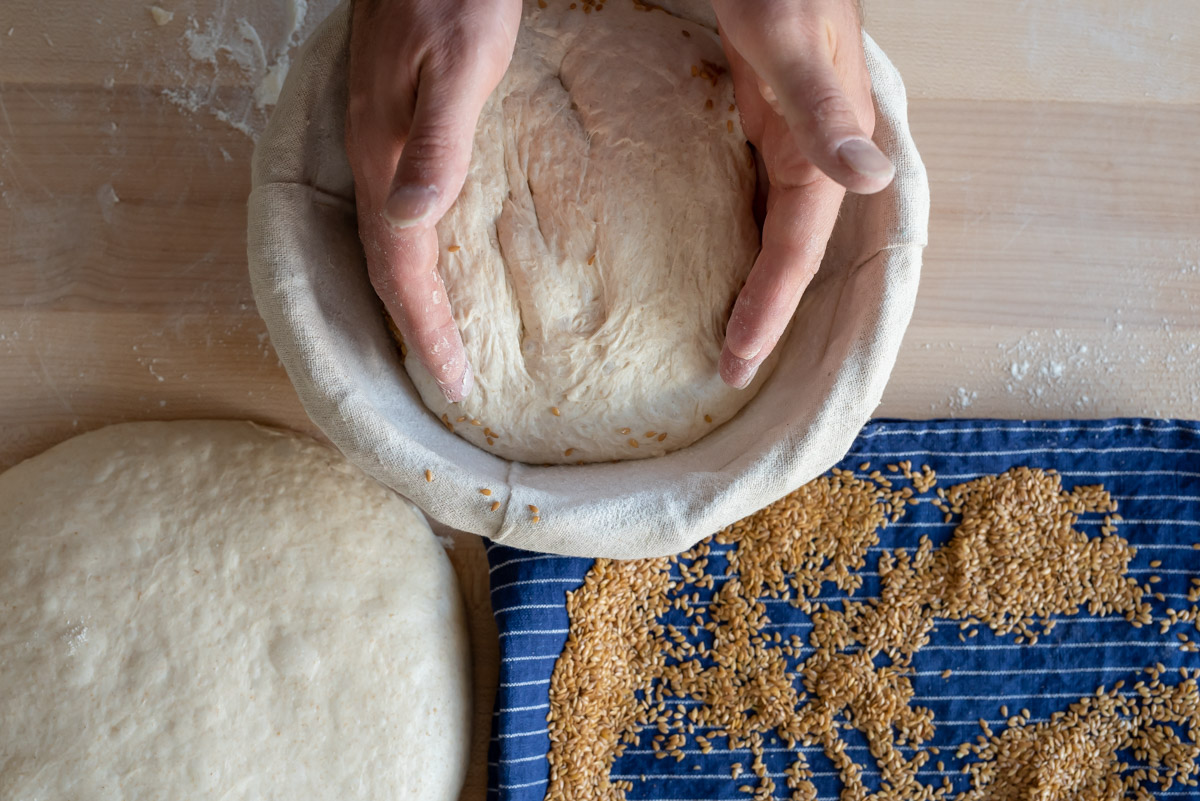 If the dough is sufficiently moist, the toppings will stick and you'll get an even layer on the outside of the dough. However, what can we do if the toppings just won't cling to the outside of the dough?
If the dough is sufficiently moist, the toppings will stick and you'll get an even layer on the outside of the dough. However, what can we do if the toppings just won't cling to the outside of the dough?
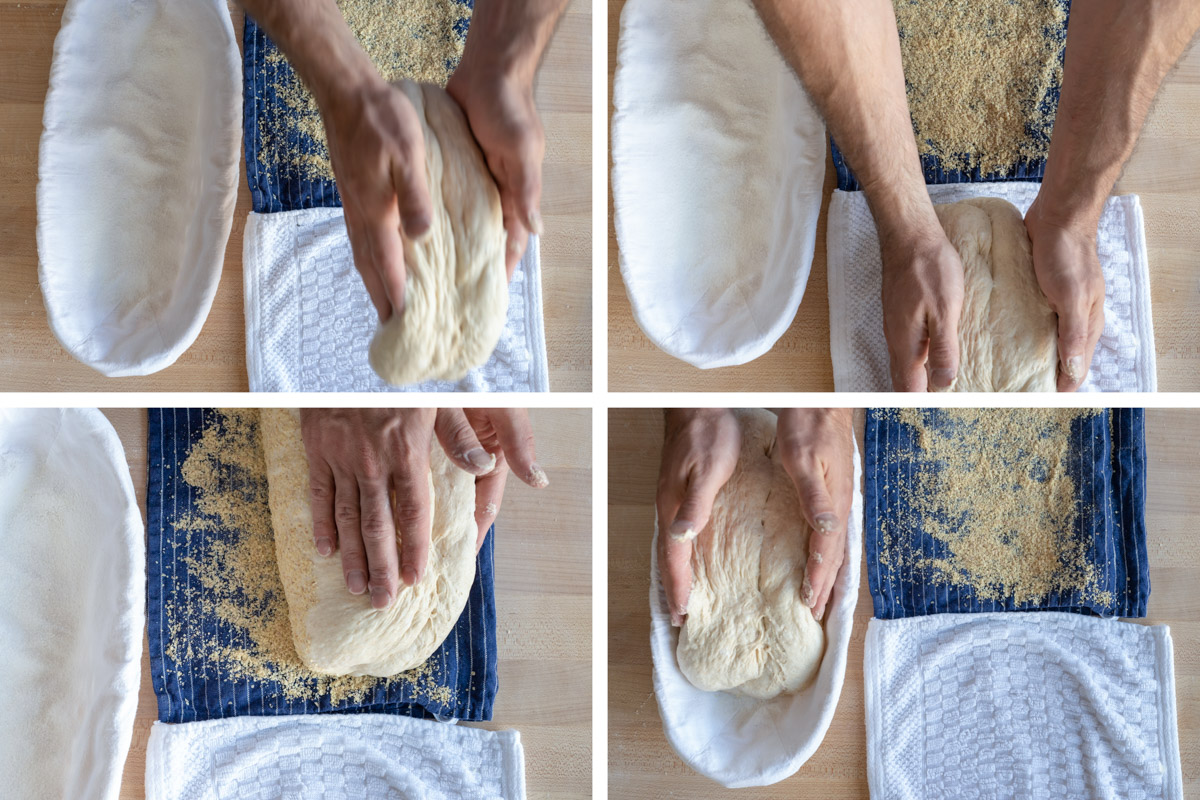
In the image above, and result below, I used raw wheat bran as a topping for the batard.
If needed, you can moisten the exterior of your dough by spritzing the shaped dough with a spray bottle after it's shaped. Once moist, proceed with rolling the dough on the towel with toppings. While this approach works, it can also make the rest of your workspace somewhat wet.
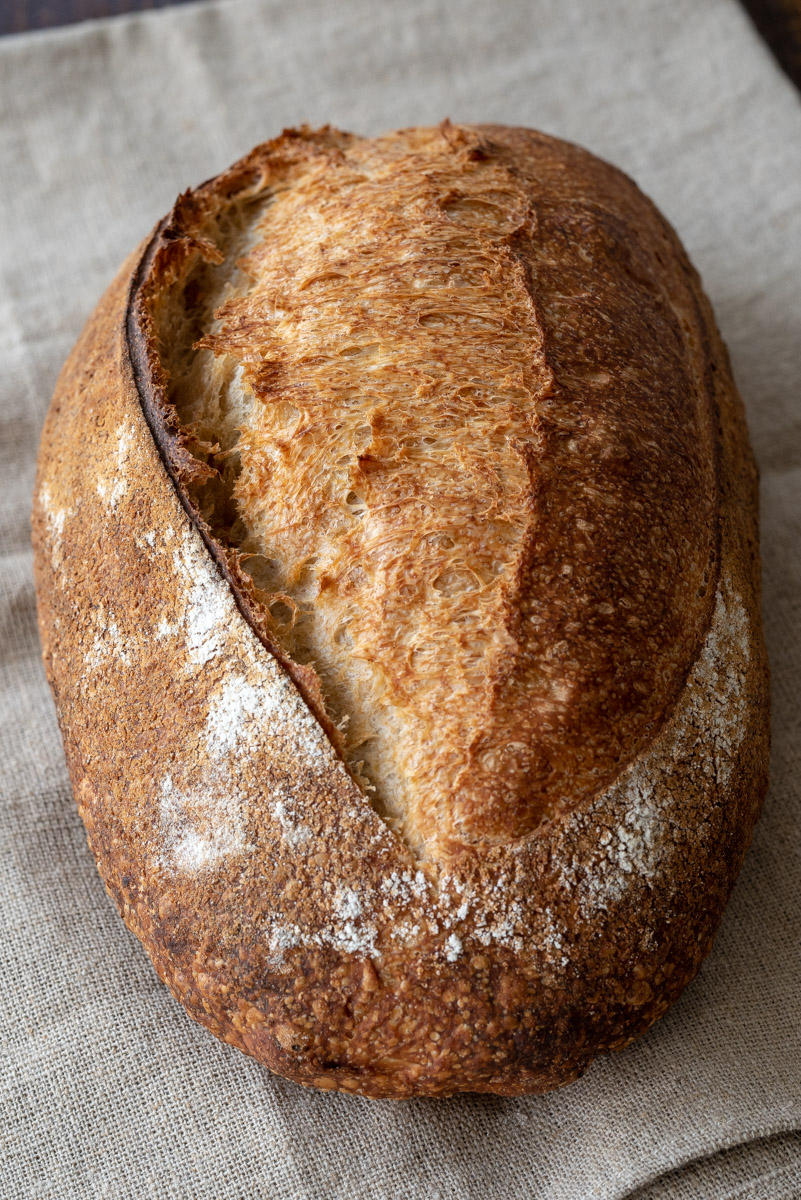
Another approach (above) is to lay a damp towel next to your towel with toppings. After you shape your dough, transfer it to the wet towel first (images in the top row, above), then roll it on the towel with toppings (lower-left image, above). Finally, place the dough in the proofing basket for its final rise.
Using a large bowl or basket filled with toppings has a number of benefits. First, it helps you keep your work surface clean, as the toppings are contained. Second, your toppings can be left in the bowl if it's a commonly used topping or you have many loaves to top. Finally, you can easily combine a mixture of seeds and grains directly in the bowl. For example, you could mix black sesame and flax, or even pumpkin seeds and flax.
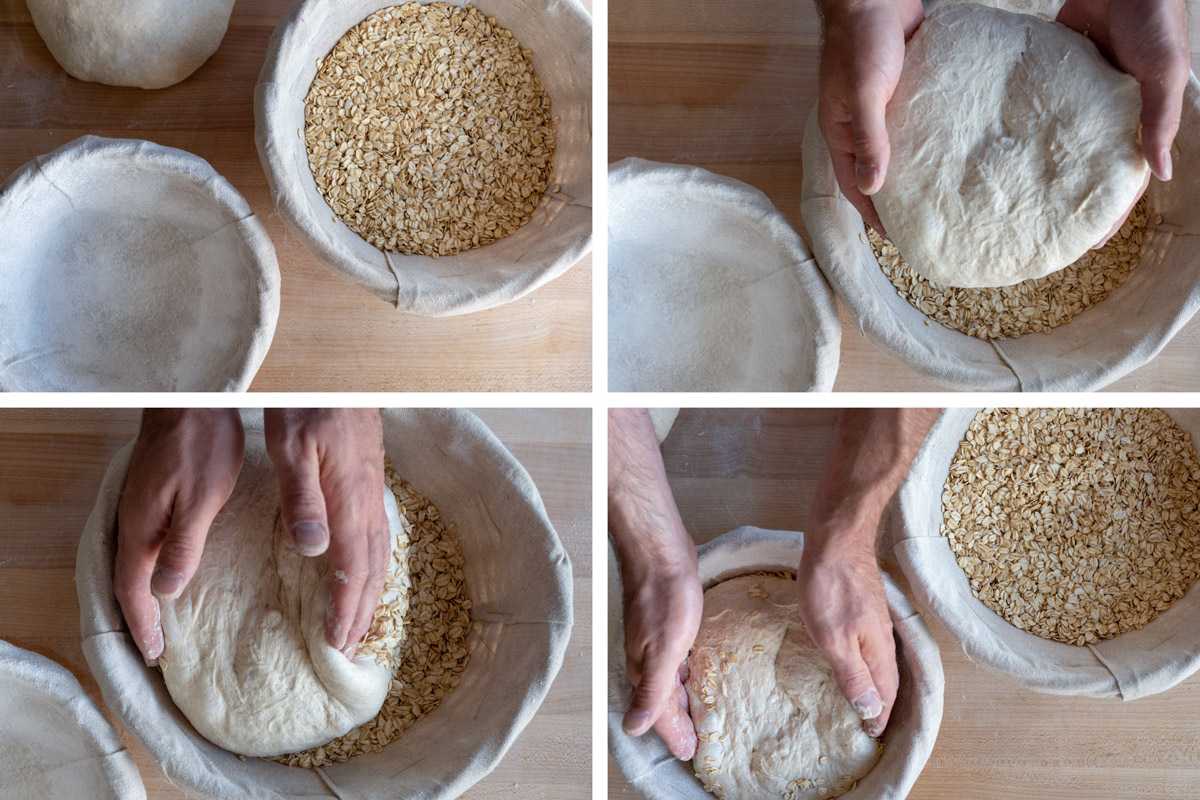
Above, I'm using a large 10" diameter proofing basket to hold the oats used as the topper. A large kitchen mixing bowl will also work well. I'm using an 8" round basket to proof my dough, so the larger 10" basket offers plenty of room for the topping process.
The procedure is the same: shape your dough, scoop it up, and lay it inside the larger basket with toppings good-side down (seam up). Use your hands to rock the loaf around, coaxing some of the toppings up onto the sides if necessary. Then gently transfer the topped dough to the prepared proofing basket for its final rise.
Using toppings on sandwich loaves is a great way to add some variety to bread you might bake often. My weekly sourdough sandwich bread is a regular family favorite. I rotate toppings on this bread between oats, flaxseed, sesame, and sometimes pumpkin seeds. It's a great way to sneak some added nutrition into even the most discerning of critics (in my case, my kids!)
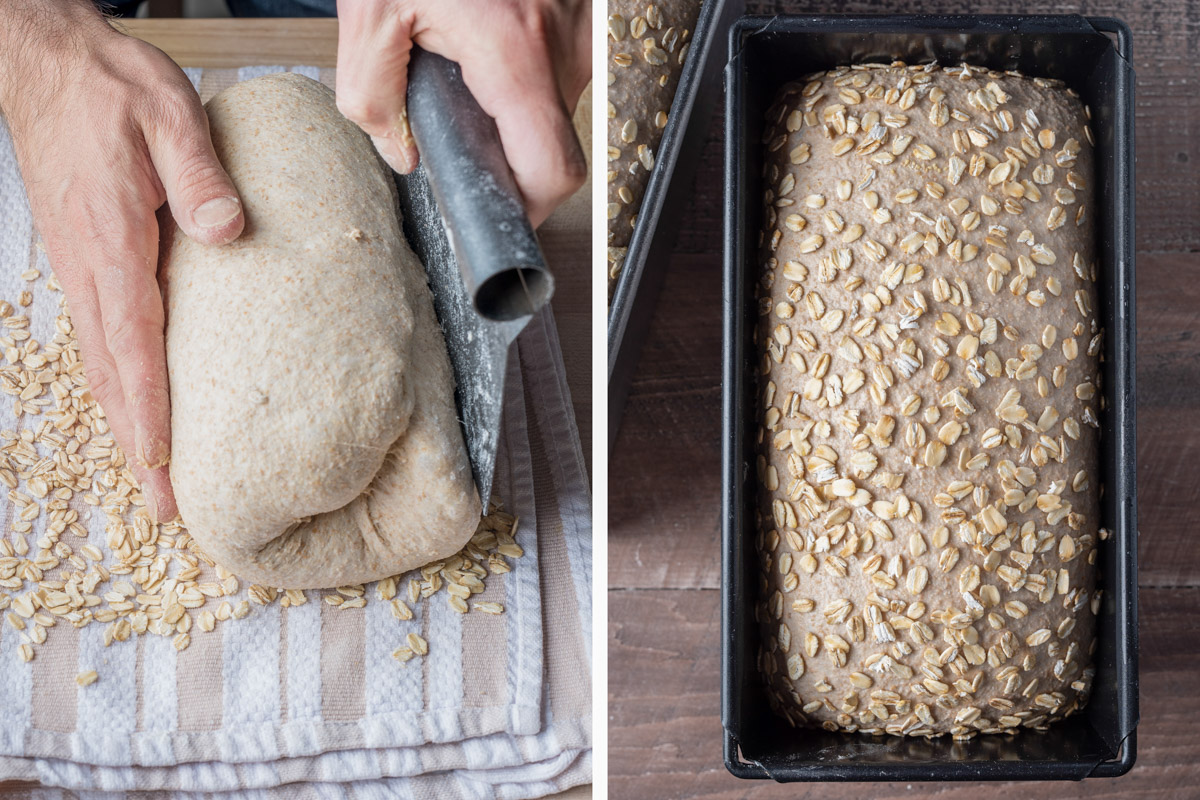
I use two methods for topping a sandwich loaf. The first is to roll the shaped dough on a towel as shown above. An alternative is to place the dough into the pan and then sprinkle them on top. Rolling on a towel spreads them in a more uniform distribution, but a sprinkle after the dough is in the pan couldn't be easier.
We typically shape sandwich loaves as a long tube to fit a rectangular pan. Therefore, I find using my bench knife and free hand an easy way to transport the dough.
First, scoop up the dough and transfer it to your towel with toppings. Then, rock it back and forth to pick up a thin layer of toppings. Finally, transfer the dough to the pan seam-side down.
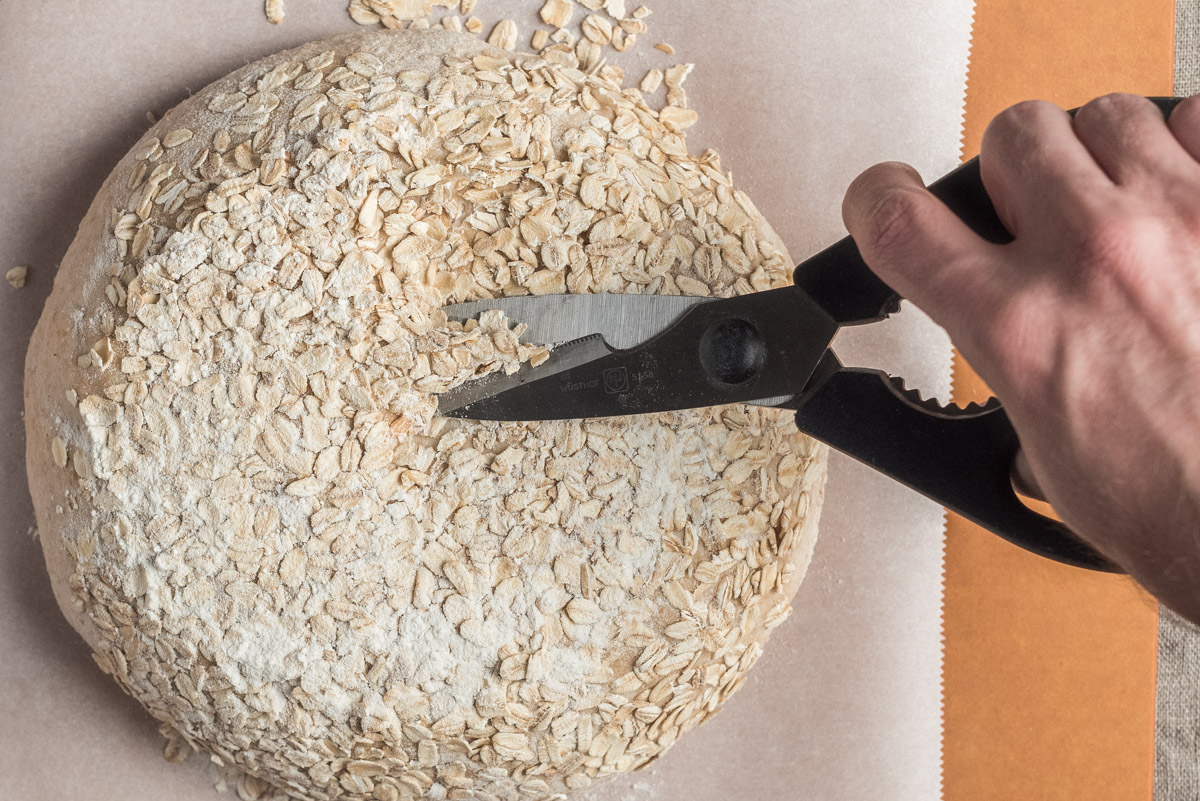
Scoring can be challenging when coarse, crunchy toppings provide obstacles for your lame (blade or knife). As I mentioned in my post on scoring bread dough, a straight or curved lame can get snagged on larger toppings.
A workaround for this is to use a pair of common kitchen scissors to score the bread. Using scissors, we can cut through seeds and grain without resistance, encouraging a beautiful zig-zag pattern as the bread bakes. The flax-topped boule below shows the result of a scissors score.
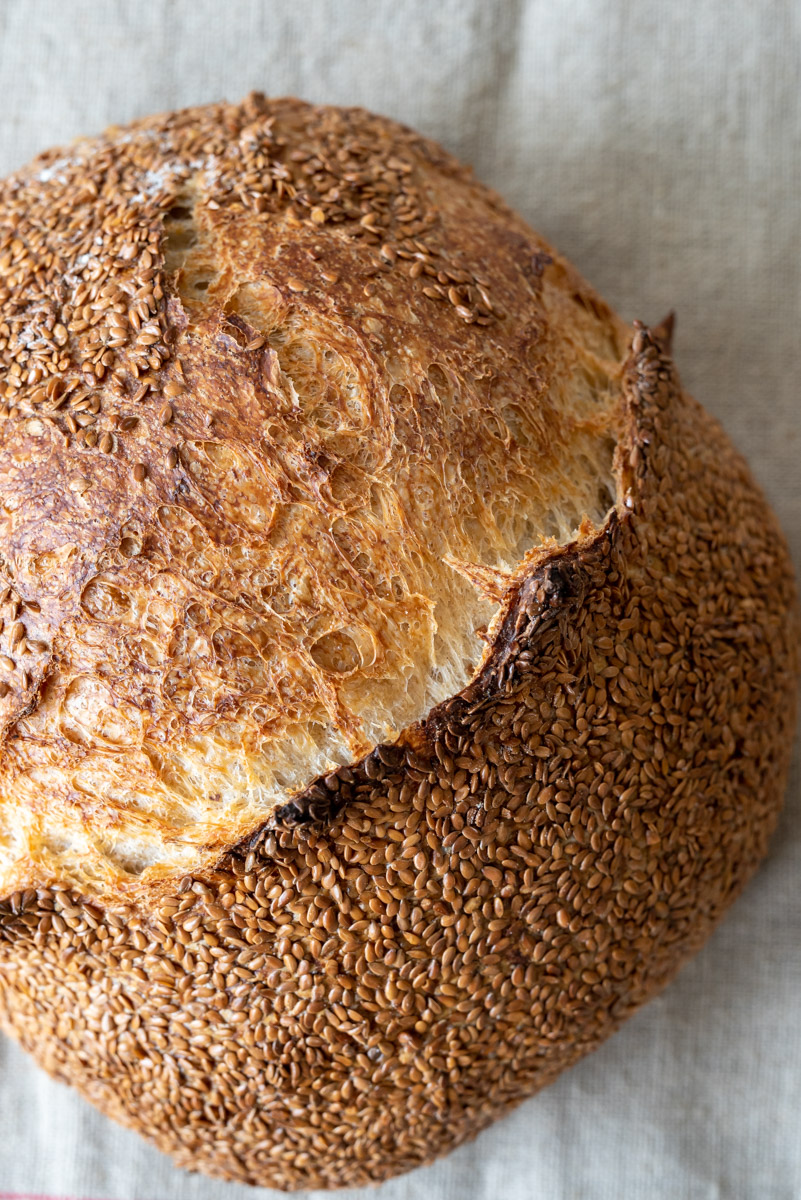
This post only begins to scratch the surface of topping bread dough. There are so many seeds and grains that work well as bread toppers. A few more of my favorites include raw sunflower seeds, pumpkin seeds, amaranth, millet, and even flaked barley.
With the above techniques, and perhaps some of these toppings as new inspiration, experiment and have fun!